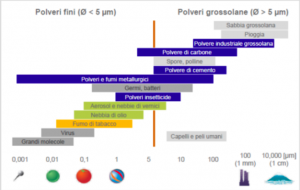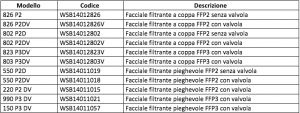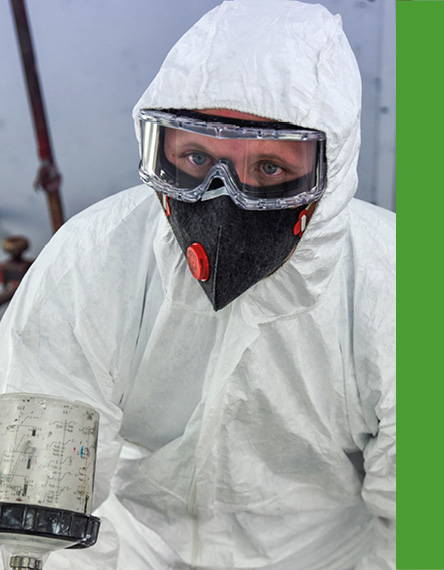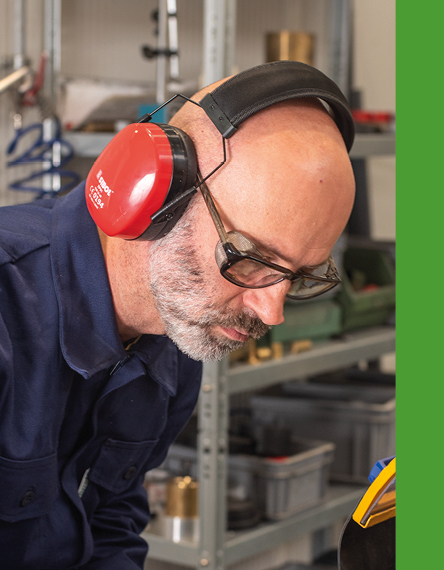By Aerosols is meant small, solid or liquid particles (such as dust, fumes or mists) scattered in the air. An aerosol contains tiny particles of solid or liquid suspended within a gas.
With dust is meant the extremely fine, solid particles scattered in the air, which were simply raised up or originated from mechanical processes.
Mists are made up of very fine droplets of liquid (especially water) suspended in the air.
Fumes are the gaseous residuals of combustion. Besides gases and vapors, fumes also contain solid matter in the form of very fine (often colloidal) particles such as soot, metal oxide particles or aerosols like suspended oil droplets. The various types of particles differ in size. Depending on their source, the particles size varies considerably and, consequently, also the associated hazard and possible protective measures vary. Particles smaller than 5 μm are called fine dust. Fine dust can be inhaled by humans and reach the lungs. Therefore, this group is particularly important for respiratory protection.
Due to their size, viruses are comparable to fine dusts, as shown in figure 1.

To adequately protect against aerosols, the legislation provides for two families of devices:
– filtering facepieces: category III devices, more commonly called “half-masks or dust-masks“, for nose and mouth protection. Particulates protection is indicated with “FFP”, the reference standard is EN 149:2001+ A1:2009;
– dust filters, to be used both with half-masks and full-face masks: category III devices for nose, mouth, chin and possibly eyes protection. Particulates protection is indicated with “P”, the reference standard is EN 143:2000+A1:2006.
Protection offered by these two types of devices increases with their filtering efficiency: FFP1, FFP2, FFP3 for facepieces and P1, P2, P3 for filters.
The World Health Organization (WHO) has published various guidelines on the prevention and use of the most suitable devices
For disease prevention, it is advisable to wear disposable masks with at least FFP2 protection level. FFP2 filtering facepieces are suitable for protection from solid and / or non-volatile liquid particles. To reduce the virus spread, infected people should wear disposable masks with protection level FFP2 or FFP3 without an exhalation valve.
Spasciani / Sibol masks are certified as PPE according to EN 149:2001+A1:2009 in class FFP2 and FFP3 and fully correspond to the World Health Organization (WHO) indications. Spasciani/Sibol product list:
















